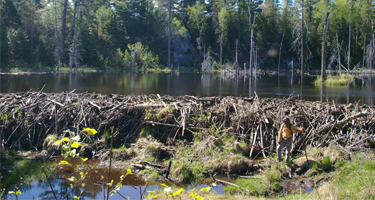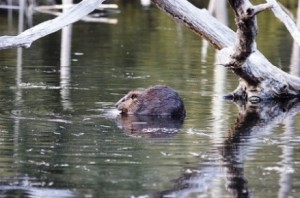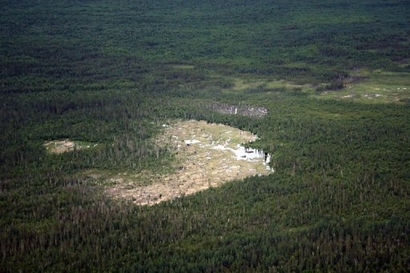World’s Biggest Dam
It’s not the Hoover Dam or the Aswan Dam or even the huge Three Gorges Dam in China.
It’s the Giant Beaver Dam in Canada.
Measuring more than half a mile across — or more than eight football fields set end to end — it was discovered in Wood Buffalo National Park in Northern Alberta, Canada, by environmental scientist Jean Thie using satellite technology.
The beavers probably started the dam in the 1970s, and generations of them have been working on it ever since. They’re still working on it … and on two smaller dams nearby. It’s quite likely that these will all connect up sooner or later, which will make the complete dam nearly a mile wide.
Very few humans have ever been able to get close to it. “It’s in one of the most remote areas you’ll find in this park,” says park spokesman Mike Keizer. “It is quite literally in the middle of nowhere — there are no roads, no navigable streams to it. The only way we can see right now is to land a helicopter there, and then take a two-day hike in.”
About beaver dams

Beavers use driftwood, green willows, birch and poplars; and they mix in mud and stones for extra strength. The beavers figure out the the strength of the water’s flow, and build their dams accordingly.
 About beavers
About beavers
An adult beaver can weigh over 40 pounds. During their third year they mate for life. Kits are born in the spring and both parents care for them. Beavers usually have one to four kits and the youngsters will stay with their parents for two years. When they are a year old they will be babysitters for the new litter. After the kit is weaned their favorite foods include water lily tubers, clover, apples and the leaves and green bark (cambium) from aspen and other fast-growing trees.

